Things To See On The Island
Nevis History & Culture
Nevis is known for its culture, which is due to its rich history.
Intrepid Carib Indians, who travelled from South America, were the first to settle on the island, which was called ‘Oualie’ at the time. These settlers peacefully appreciated the island’s natural beauty and resources, until the Europeans arrived in the late 1400s and used the island regularly as a point of reference during voyages – naming the location Nevis.
The 1600s saw the British colonize the island, initially creating conflict with the French over the lush, green, mountainous landscape of Nevis – however, later the two European countries settled peacefully and lived together in harmony.
Today, Nevis continues to celebrate its rich history and culture through a series of events that take place throughout the year, allowing visitors and locals alike to celebrate the food, the people and the natural elements of the island, from swims, runs and agriculture tours, to cooking festivals and music events.
Historical Sites & Landmarks
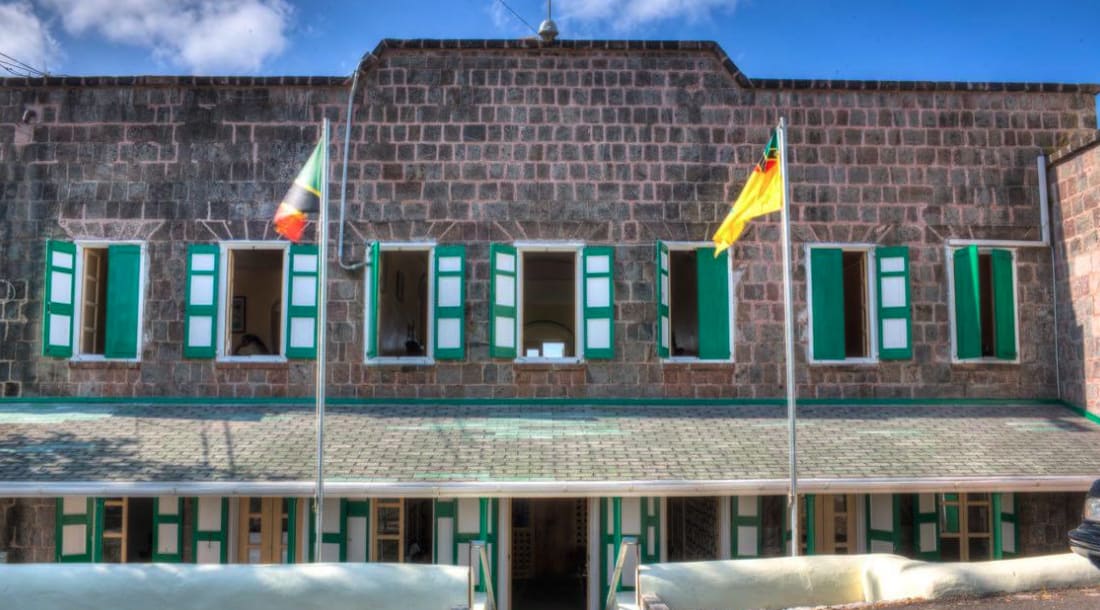
Bath Hotel and Spring House
Details
Built in 1778, the Bath Hotel was once a playground for the rich and famous who came to Nevis to take in the therapeutic, hot spring baths.
Guests would come by ship from throughout the West Indies and Europe for this pleasurable experience.
John Huggins, a merchant and aristocrat built the large, stone hotel at a cost of 43,000 “island” pounds, and surrounded it with lush landscaping, statuary, and goldfish ponds. The hotel was 200 feet long and 60 feet wide.
Dignitaries such as Lord Nelson, Samuel Taylor Coleridge, and Prince William Henry, who was the Duke of Clarence, visited the hotel in its heyday.
With the downturn of the sugar industry, Nevis stepped into the world of tourism with this hotel, which flourished for about 60 years. Since then the hotel has had various uses, reopening as a hotel from 1912 until 1940. It was used as training center for the West Indian regiment during World War II, and most recently, the temporary headquarters of the Nevis police while the new station was built.
Within the compound of the Bath Hotel is the Spring House, a two story masonry structure which was constructed from local hand cut stones. This building sits on the bank of the Bath Stream. The facility comprises of five thermal baths whose source of water springs from the base of the house. The spring water is reputed to contain minerals of medicinal value and is known to have cured chronic rheumatism and gout. Its water temperature ranges from 104F to 108F hence the reason why the Spring House was used significantly by visitors and locals alike.
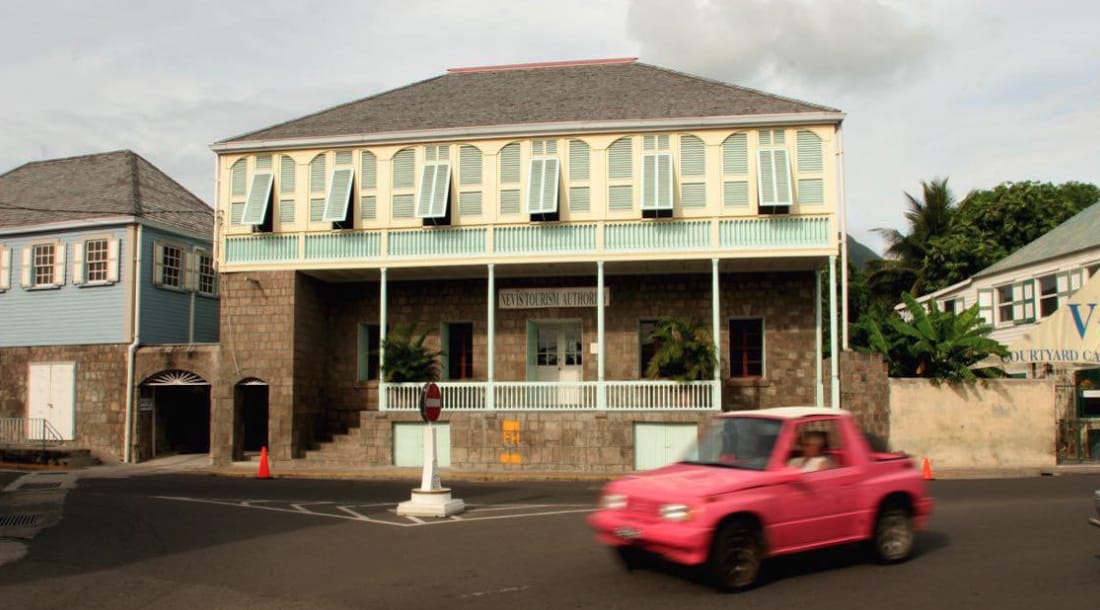
Charlestown
Details
There are numerous 18th and 19th century Georgian-style buildings remaining. The lack of modernization has kept much of Charlestown in its original state, and local efforts are underway to preserve the original buildings.
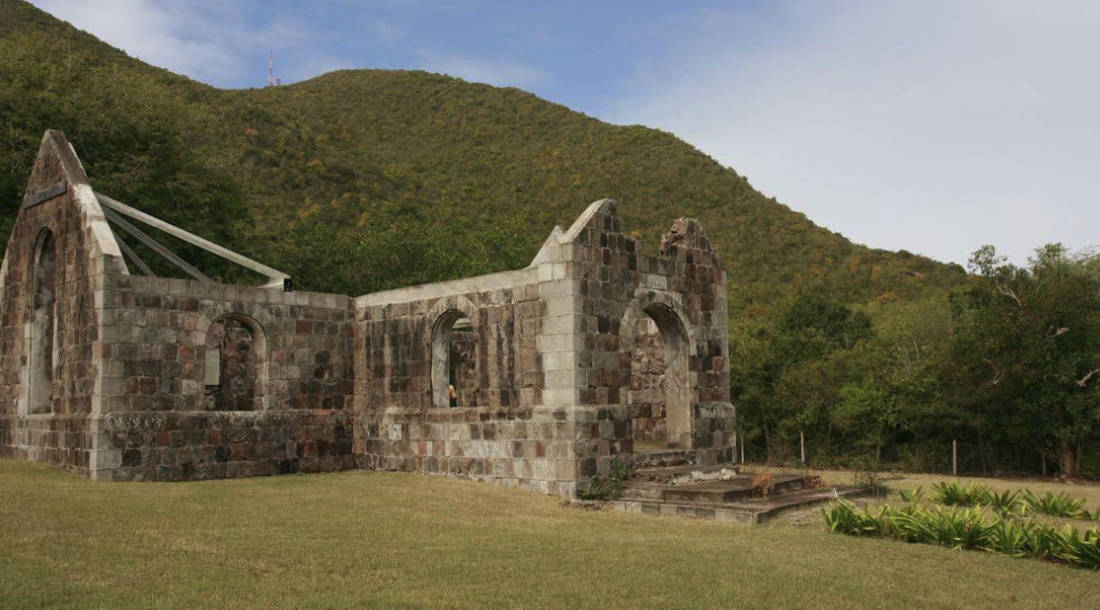
Cottle Church
Details
The ruins are located north of Charlestown, hidden in the woods off the main road, just south of the Newcastle Airport. A small sign on the main road marks the beginning of a dirt track that leads back to the church.
A very lenient slave owner, Cottle created this Anglican Church, which was never consecrated, since it was illegal at the time for slaves to worship.
Cottle Church is located on part of the 980-acre Round Hill Estate. The structure was severely damaged in a 1974 earthquake and again in 1989 during Hurricane Hugo. The stone building still provides a glimpse into our history.
Cottle Church is still a primary tourist attraction and stunning wedding location.
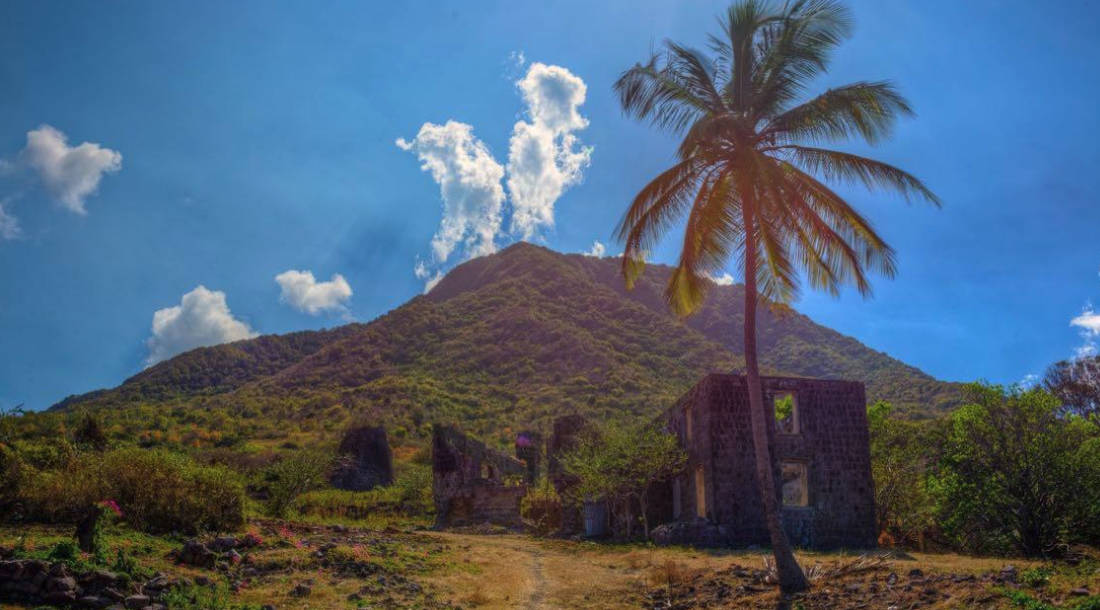
Eden Brown Estate
Details
The circa 1740 plantation, with a great house and other outbuildings has a history unlike many of the other plantations, and some believe it is haunted.
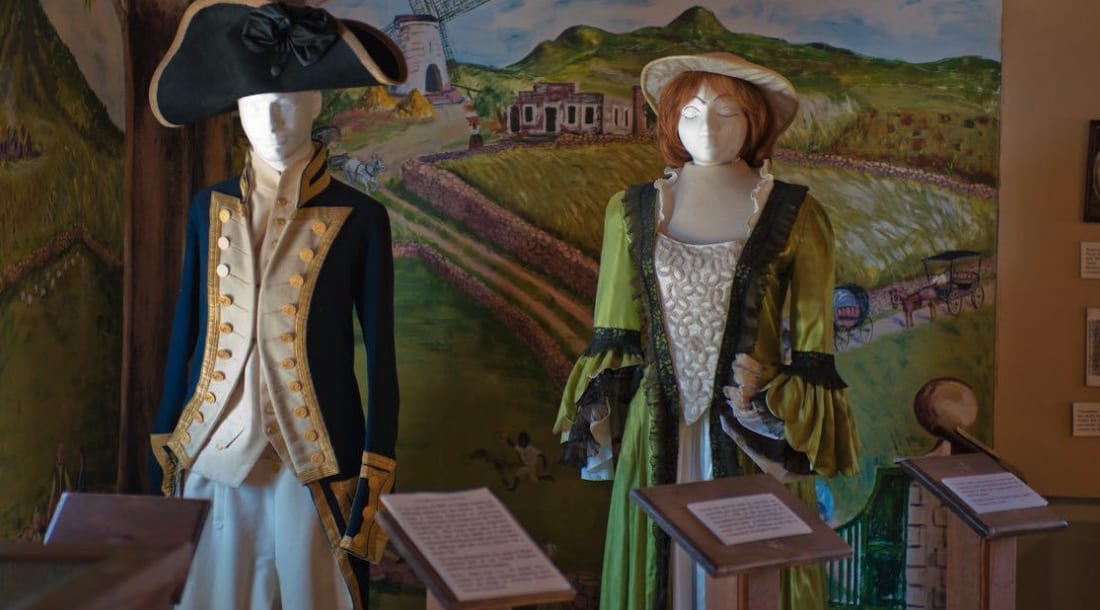
Horatio Nelson Museum
Details
Nelson’s love affair with Nevis was largely due to Fanny Nisbet, a widow he met at a dinner party on Nevis. The two fell instantly in love, and their nuptials are without a doubt the most famous wedding here to date.
The museum houses what is said to be the largest collection of Nelson relics in the Western Hemisphere, called “Nevis in the time of Nelson”. The late Robert Abrahams, a Philadelphia lawyer who had a home in Nevis, compiled the collection during his life and first displayed at his Nevis home.
Mr. Abrahams donated the artifacts to the Nevis Historical and Conservation Society, a non-governmental body, which he believed was most capable of caring for the collection. The Society began construction of the Horatio Nelson Museum to house the collection in 1990.
On March 11, 1992, the museum opened in honour of Nelson, who is best known for his valiant command of the British fleet during the Battle of Trafalgar. The opening date was the wedding anniversary of Lord Nelson and Fanny Nisbet, and to this day the historical society hosts an anniversary tea each year in their honour.
Efforts to conserve those delicate artifacts have been well rewarded. They have fascinated thousands of visitors to Nevis, including Queen Elizabeth II and other members of the Royal family who have visited the island.
For information, call 869-469-0408.
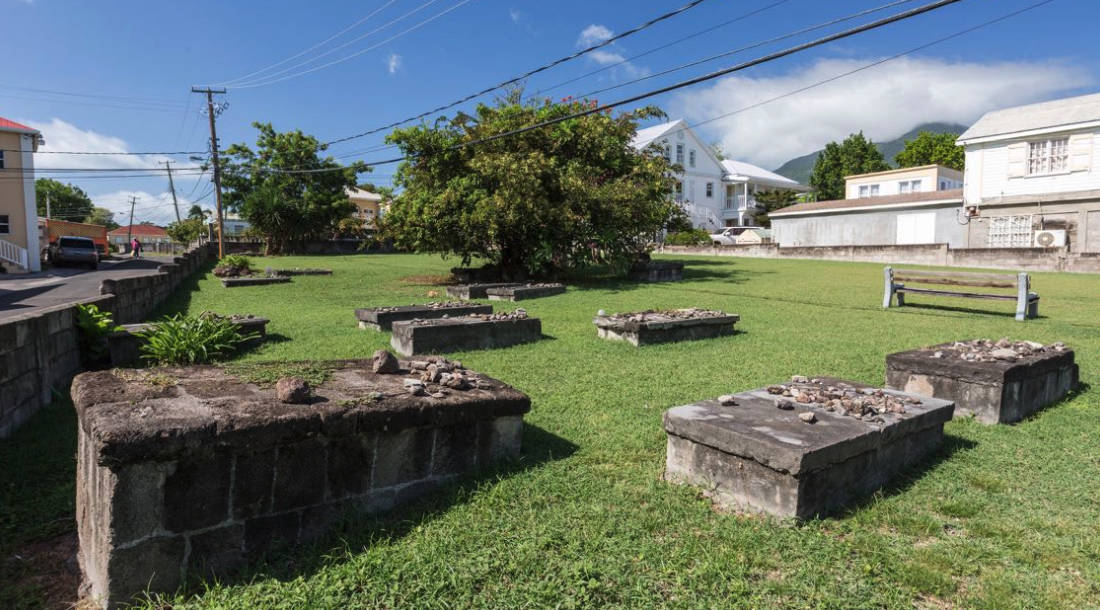
Jewish Cemetery And Jew's Walk
Details
The engraved tombstones are written in English, Hebrew, and Portuguese, since these were Sephardic Jews, who had come to Nevis from Brazil. They came to the Island to introduce the technology of Sugar production to the island.
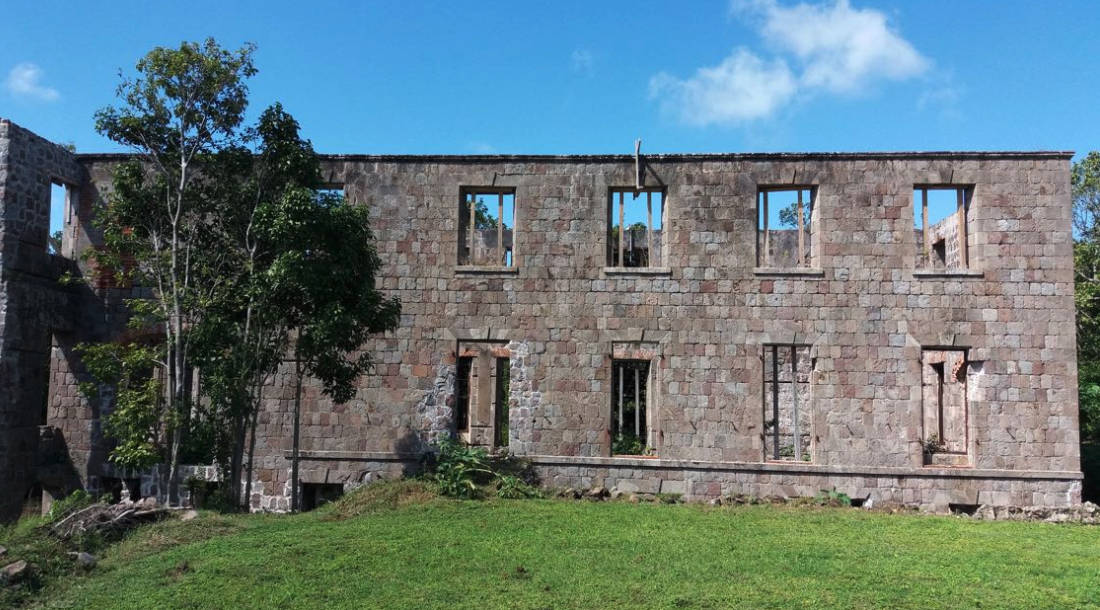
Montravers Estate
Details
Only the foundations of that earlier house remain, and in turn they lie atop the foundations of a 17th century house which is believed to have been burnt by the invading French army in 1706. The 17th century building was built by the Freeman family, the first owners of the estate. The 18th century structure was constructed by the Pinneys family, for whom Pinney’s Beach is named.
At one point the Pinneys considered allowing poets and writers from England to reside on the estate as an early “artist’s colony”, but it never came to pass. What makes this an exceptional site is that papers and correspondence of the Pinney family have survived in Bristol and give invaluable information about the buildings and life on the estate, which are being confirmed by archaeology.
The estate was occupied and produced sugar for 300 years.
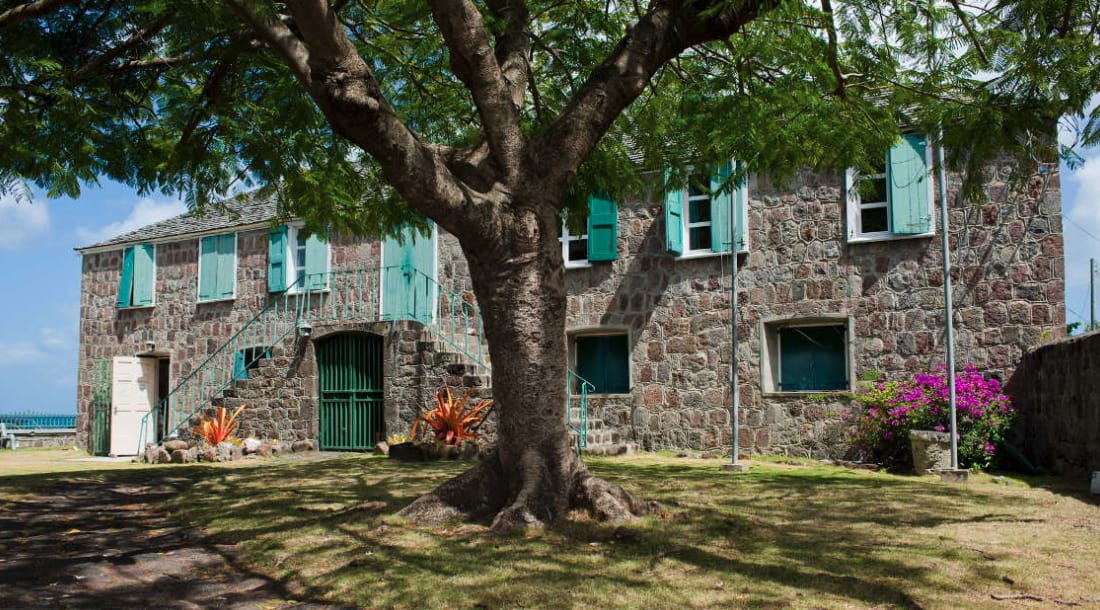
Museum of Nevis History
Alexander Hamilton’s Birthplace
Details
Later in his life he helped draft the U.S. Constitution and was the first secretary of the Treasury. He was an outspoken advocate of the emancipation of slavery.
The building today, known as Hamilton House, houses one of the island’s two museums on the first floor. The second floor is the meeting room for the Nevis House of Assembly.
The lovely stone building was built around 1680, but was destroyed in an earthquake in 1840, and was restored in 1983. Its historic value coupled with its beautiful setting on Charlestown harbour make it an island treasure and a delightful place to spend an afternoon.
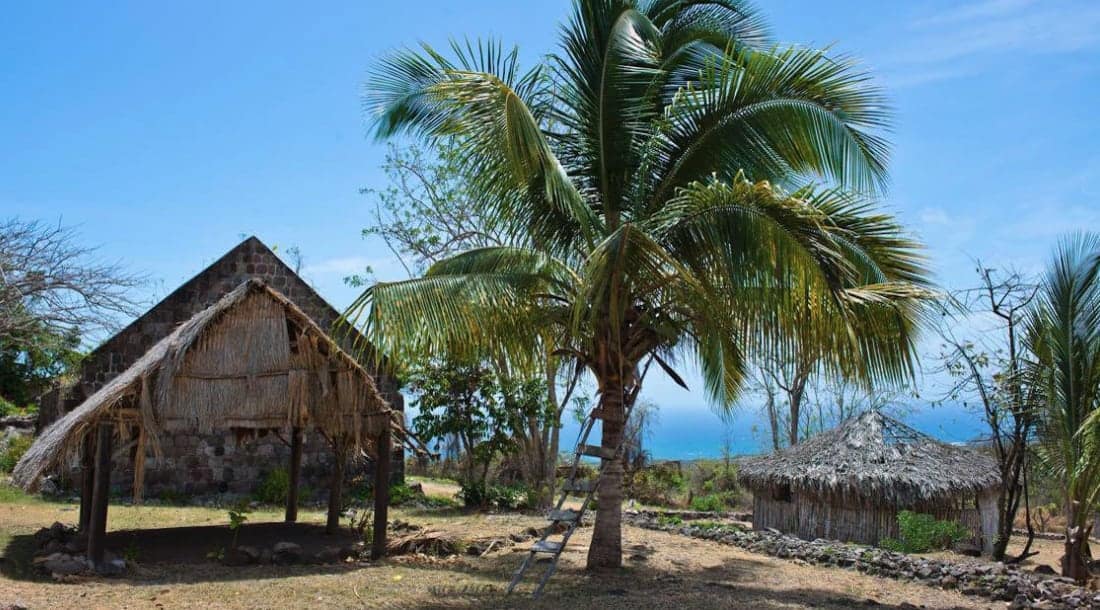
Nevisian Heritage Village
Details
The houses, dating from the Carib Indian era, are replicas and are furnished with antiques and relics of their relevant periods. The display includes the blacksmith’s shop, rum shop, and the shoe-maker’s shop, along with the dwelling houses. To complete this traditional village setting are “backyard” gardens, beautiful flower gardens and various species of indigenous plants and shrubs some adorning the typical “estate yard” ruins. And, there’s even an area for animal rearing.
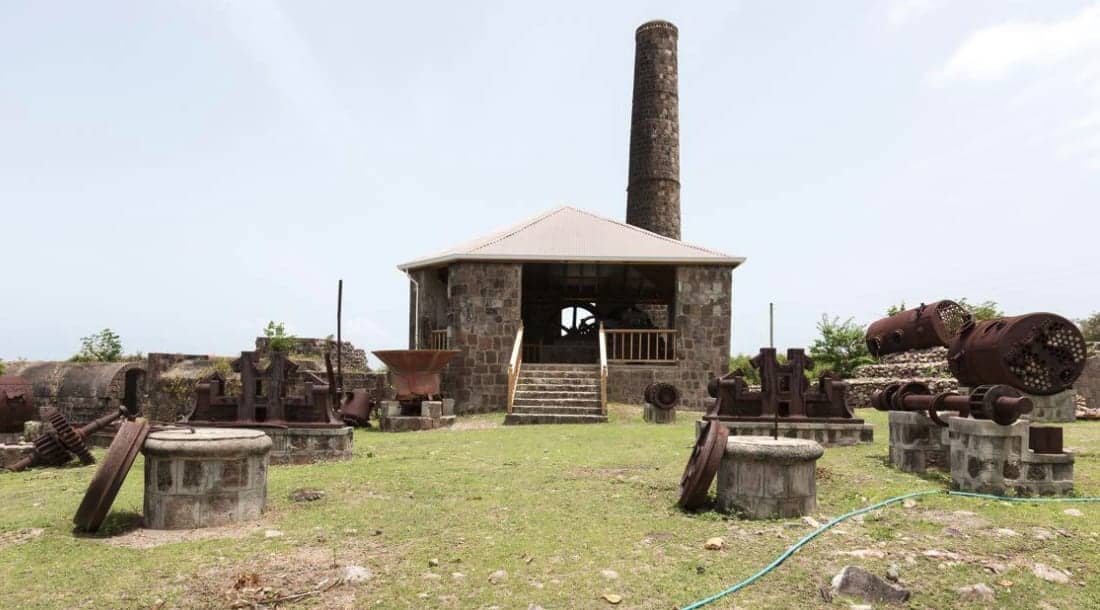
New River & Coconut Walk Estates
Details
They can easily be visited together and are about a 25-minute drive from Charlestown, or eight minutes past Golden Rock Plantation Inn.
Just off the main road are the ruins of New River, which can be recognized by its tall tower and squat building that houses the old steam engine. Originally powered by animal mill, the sugar plantation was eventually converted to steam, which remained in operation until 1958—the last one on the island.
Walking through the estate, which was originally 582 acres, the ruins of the old Great House can be seen, as well as the cistern.
Continuing down towards the sea from New River, you can follow the goat trail to Coconut Walk, which was named for the luxuriant coconut trees that once lines its borders. It was once densely cultivated with sugarcane, but like other Estates, it owners had to change its crop due to the deterioration in sugar price.
Significant pieces of pottery have revealed that this was an early Arawak Indian settlement. Among the ruins is the tallest windmill in Nevis and a stone limekiln.
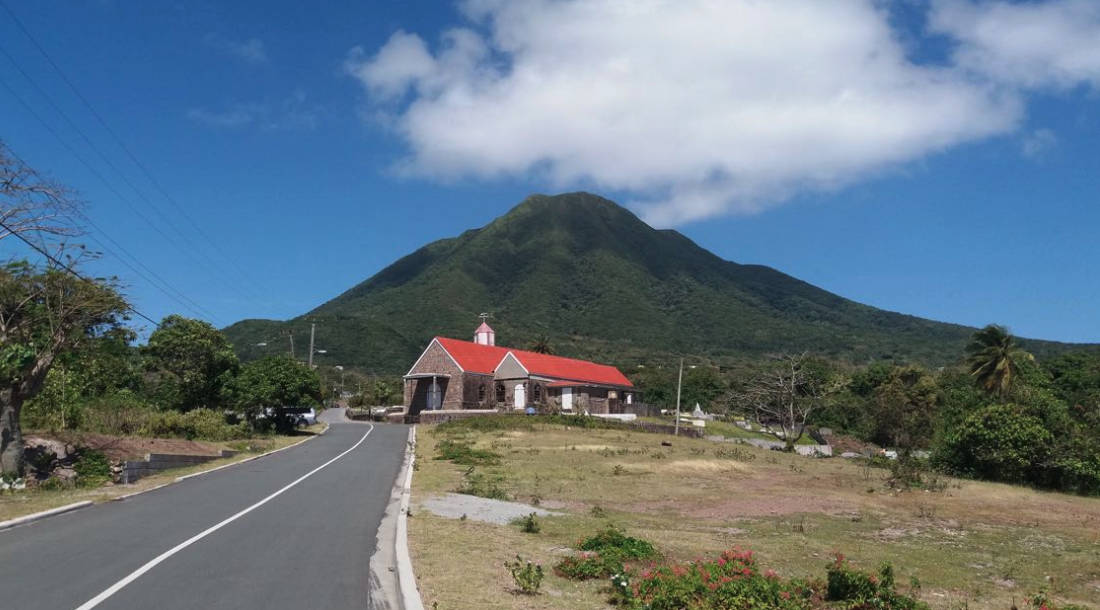
St. George’s Anglican Church (c.1842)
Details
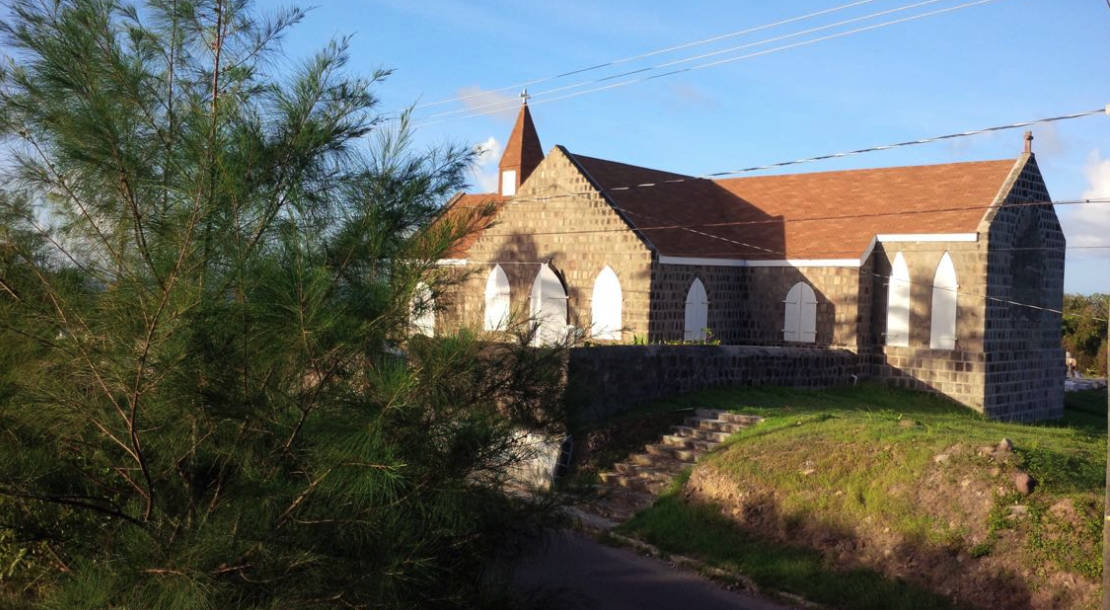
St. James Winward Church
Details
Its earliest grave marker dates to 1679. The church has been renovated several times since it was consecrated.
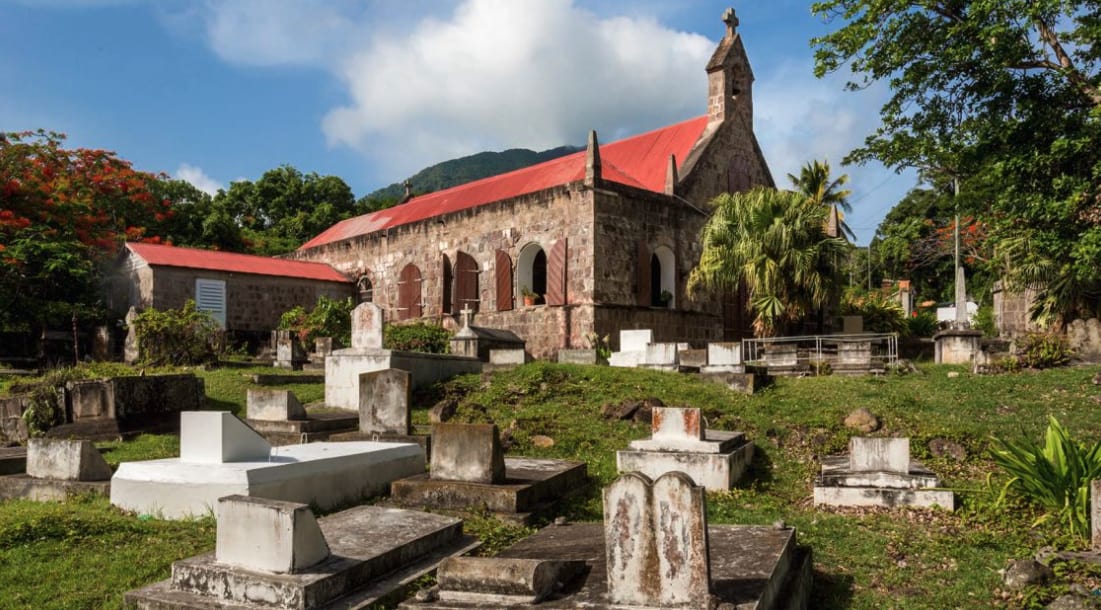
St. John's Fig Tree Church
Details
Located about 10 minutes south of Charlestown on the main road, the churchyard contains many tombstones, which date back to the 17th century.
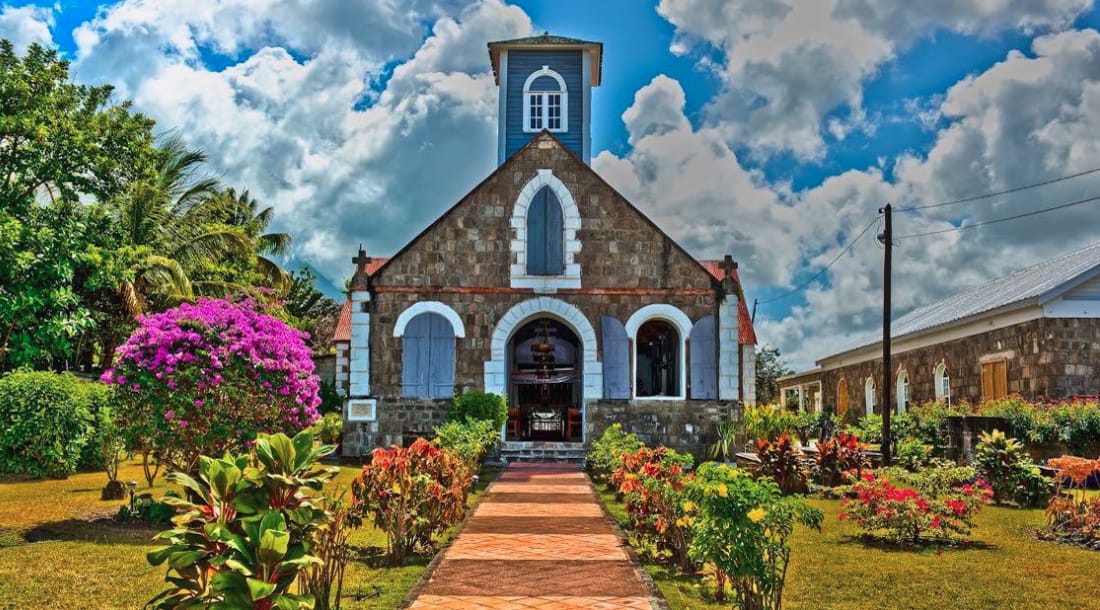
St. Paul's Anglican Church
Details
The stained glass windows beside the altar are in memory of Rev. Daniel Gatward Davies, priest from 1812-1825, who converted slaves before the emancipation. He went on to become the Bishop of Antigua. Next to the church is another stone building, which was the parish school. Inside the walled yard are graves dating to 1669.
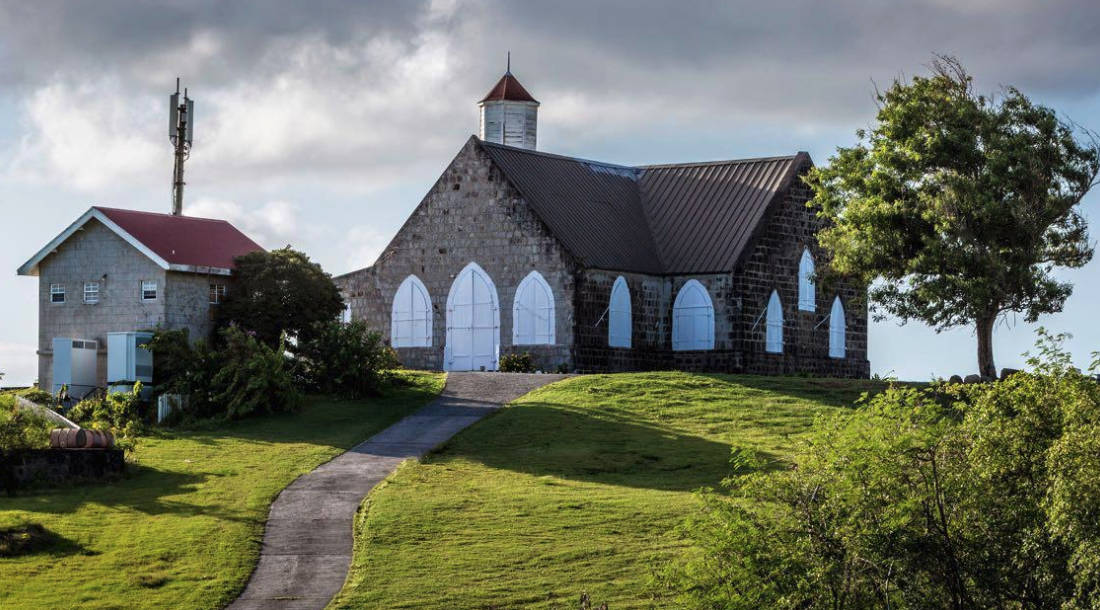
St. Thomas' Lowland Church
Details
The first Anglican Church in the Caribbean, and the oldest church on Nevis, St. Thomas’ was built in 1643.
It is located on the main road about three miles north of Charlestown, and was built to serve the town of Jamestown, the island’s original capital that disappeared. The church is perched high on a hill overlooking St. Kitts.
The church cemetery has many tombstones bearing names of Nevis’ early settlers. They date back to 1649 and there is a vault that holds the remains of John Huggins (1763-1821), the founder of Bath Hotel.
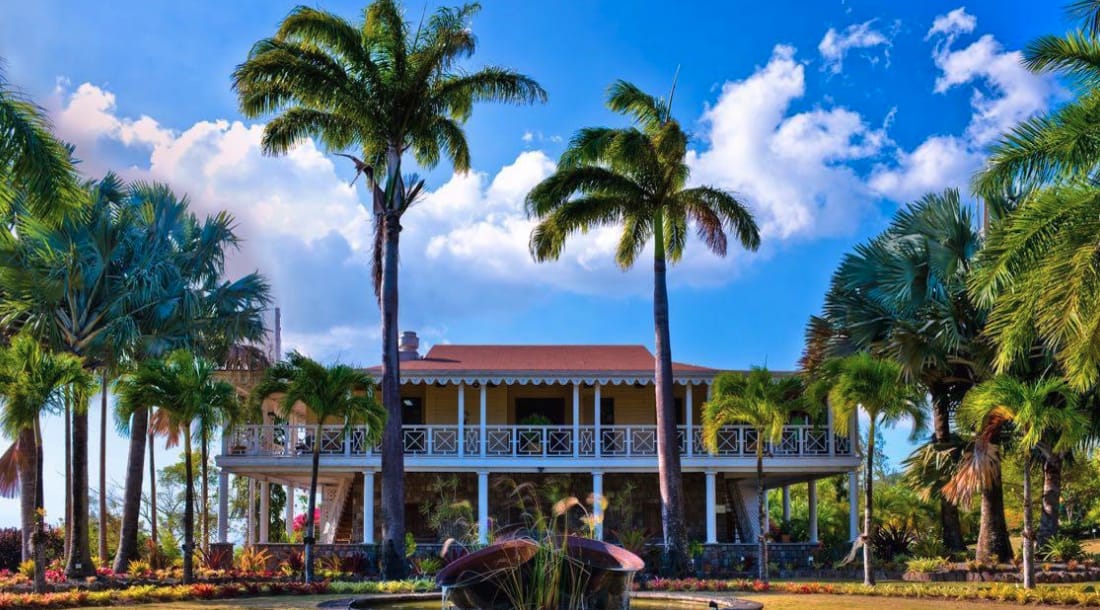
The Botanical Gardens of Nevis
Details
They chose a lovely spot in Montpelier Estate area, with views of Nevis Peak in the distance. The gardens, filled with sculptures, fountains, and a replica of a Great House, has many garden areas to visit: roses and vines, cactuses, fruit trees, orchids. The most outstanding part is the tropical rain forest conservatory, built to emulate the conservatory at Kew Gardens in England. It houses tropical plants and huge Mayan-type sculptures.
Many choose to be married in the gardens. In the Great House is a wonderful gift shop, selling items related to plants and nature, and Martha’s Tea House for afternoon luncheon and tea (named after the owner’s wife).
There are occasionally lectures and classes given at the gardens. Memberships are available as well as single-day admissions. For information, call 869-469-3509.
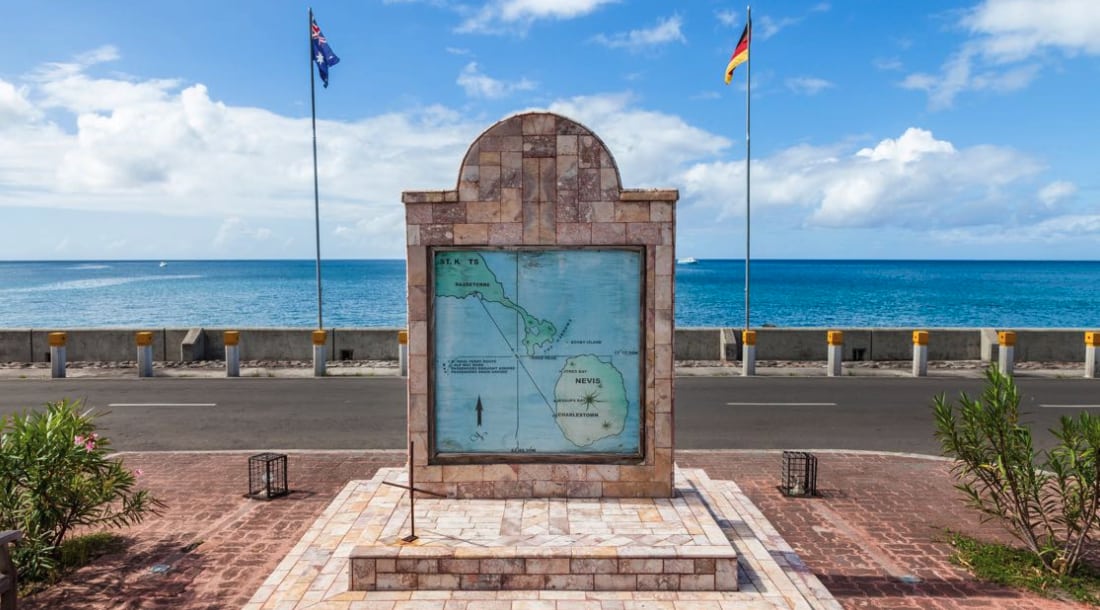
The Christena Memorial Plaque
Details
Located on Samuel Hunkins Drive in the vicinity of the Museum of Nevis History, the plaque lists the names of the 233 Kittians and Nevisians who perished in this unforgettable tragedy. The impact of this tragedy is still felt throughout the twin-island federation as most families were touched in some way.








